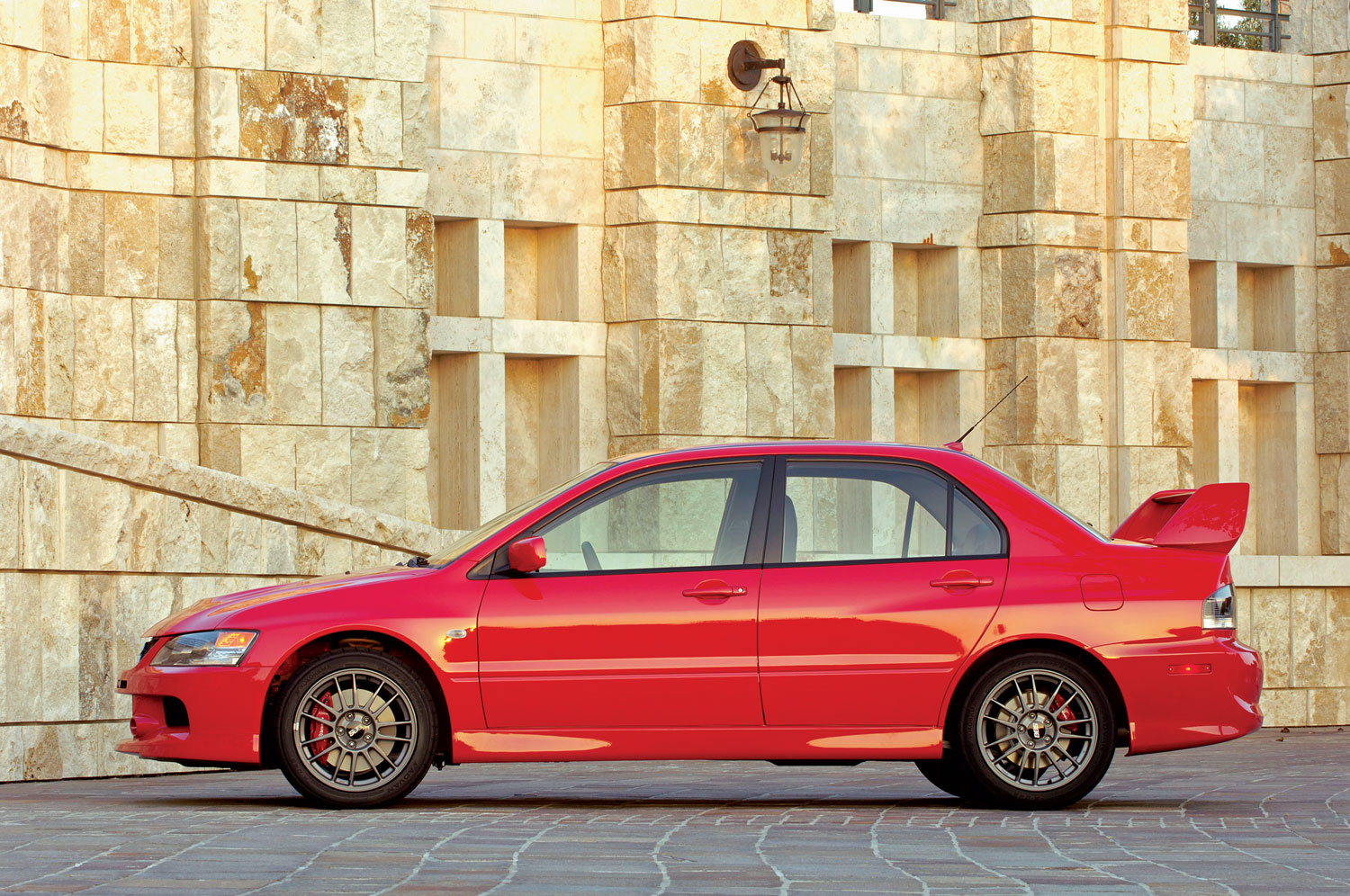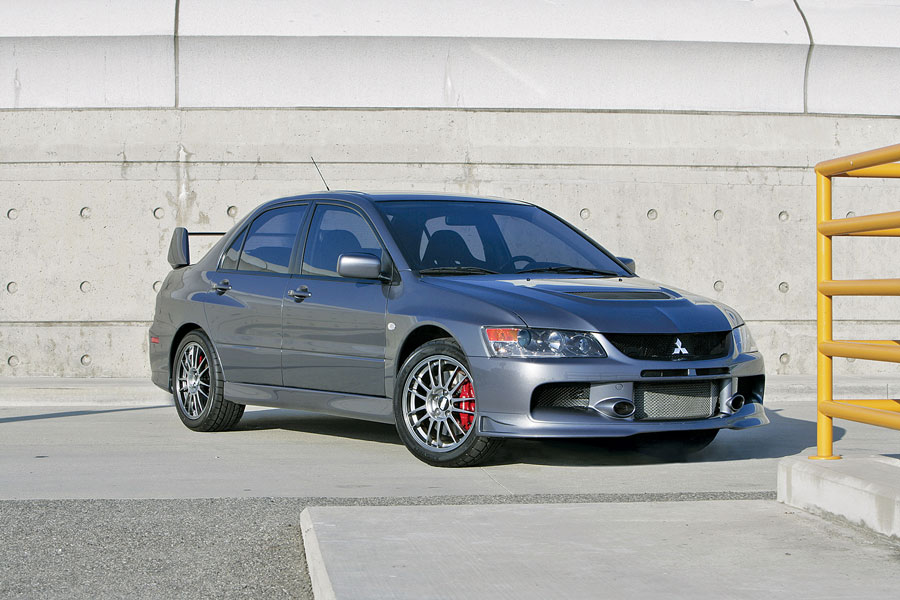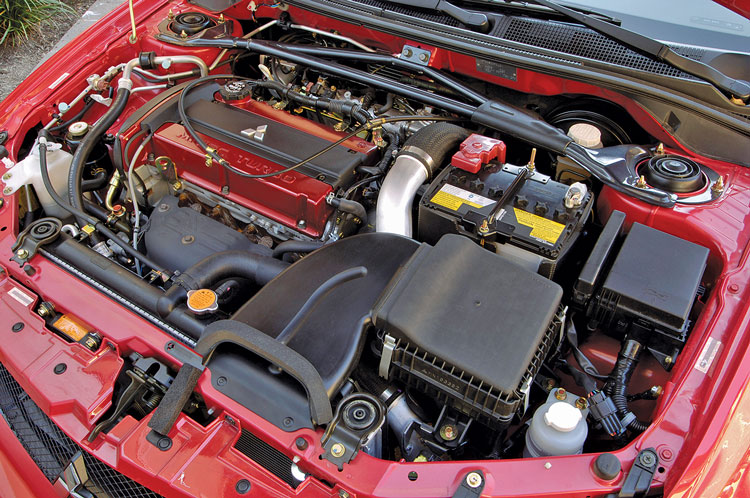
It wasn’t terribly expensive. It didn’t sound exotic. And with the exception of its oversized rear wing, it was invisible to most. But Mitsubishi’s Lancer Evolution, born from World Rally Championship competition, was unquestionably a driver’s car. We’d even go so far as to call the “Evo” o ne of the sharpest driver’s tools of its era, particularly the eighth and ninth generations, the first to be sold in the United States. Even among more-modern performance cars, the Evo VIII and IX both prove to be quick, responsive and engaging. A great value when new, they’re still affordable — but perhaps not for long.
Worth the wait
Mitsubishi resisted selling the Evo in the U.S. for more than a decade, claiming that it couldn’t be federalized because of emissions compliance, bumper regulations and other nonsense. The ruse continued for seven generations until Mitsubishi’s bean counters could no longer ignore the vast number of WRXs pouring off Subaru dealer lots. Finally, in January 2003, the Evo VIII debuted at the Los Angeles Auto Show. It went on sale shortly thereafter, giving U.S. buyers a taste of long-forbidden fruit.
At this point, the Evo’s turbocharged 2.0-liter 4-cylinder powerplant had seen enough development to be considered legendary among those in the know. Though it had done duty in previous-generation Evos for years, it was also sold here in the Mitsubishi Eclipse, Eagle Talon and Plymouth Laser. In those applications, it established a reputation for robustness at ridiculous power levels, thanks in part to its sturdy iron block. In the Evo VIII, it was rated at 271 horsepower and 273 foot-pounds of torque. A 5-speed manual transmission was the only gearbox available at launch.
But it was the Evo’s all-wheel-drive system that was truly magical. A viscous-center differential, clutch-type rear limited-slip and an open-front diff were all the Evo initially needed to deliver a driving experience that surpassed its Japanese and German contemporaries, the Volkswagen R32 and Subaru WRX.
The Evo evolves
Mitsubishi didn’t call this car the Evolution for no reason. Powertrain tweaks continued, and a front helical limited-slip differential was added to the lightweight RS trim for 2004. Replacing the steel roof with an aluminum lid and losing the anti-lock brakes, rear wing, power windows and other formalities scrubbed approximately 66 pounds relative to a standard Evo (although that number can vary by source).
The new-for-2005 MR trim received the RS’s aluminum roof and a 6-speed manual plus forged BBS wheels and softer Bilstein dampers. The helical front limited-slip diff and Active Center Differential, which had multiple modes, both became standard across all trims that year. And all 2005 Evos got a bump in output to 276 hp and 286 foot-pounds.

By the time the Evo IX came around for the 2006 model year, there was little left to do. A bigger compressor housing on the turbo and the addition of the variable valve timing on the intake camshaft (called MIVEC) were the substantive additions and were good for another 10 hp, for 286 total.
All Evos ran 0–60 mph times in the 5.0- to 5.3-second range. But it was the sedan’s ability to rotate off throttle, rocket out of corners and absorb uneven roads that defined its stunning handling.
Inside, the Evo couldn’t have been more tepid. There were Recaro buckets, but otherwise the interior was a mix of unremarkable plastic and simple controls straight from the Lancer econobox. The sedan did have a properly sized rear seat, big enough to accommodate full-sized adults. And because it arrived before every car had to have a screen, you’ll not have to stare at one of those outdated dash warts should you buy an Evo today.
Which Evo for you?
Which Evo is most desirable depends on an owner’s agenda. Many of these cars were driven, abused, sometimes neglected, and nearly always modified. And there aren’t very many of them to start with, so finding a clean, low-mileage example is a tall order.

The Evo IX MR is, to many people, the one to have since it brought together the most coveted features: the 6-speed transmission, an aluminum roof, the updated turbo, MIVEC, Bilstein dampers and the option of MR-exclusive Graphite Gray paint. The stiffer base dampers and stronger 5-speed came standard on the Evo IX SE, which also offered the updated turbo, MIVEC, aluminum roof and BBS wheels. Choose that or the 2006 RS if you’re seeking the purest performance versions.
Prices on the rise
In the past five years, Evo VIII and IX auctions on Bring a Trailer range from $13,500 for a modified and well-used 100,000-mile IX base model to $49,750 for a 13,000-mile Evo IX MR in excellent condition. Most cars transact for around $25,000, but prices are climbing. Certainly, some buyers consider Evos an investment to be locked away in a climate-controlled garage, but more are simply buying a driver’s car to use accordingly. ♦